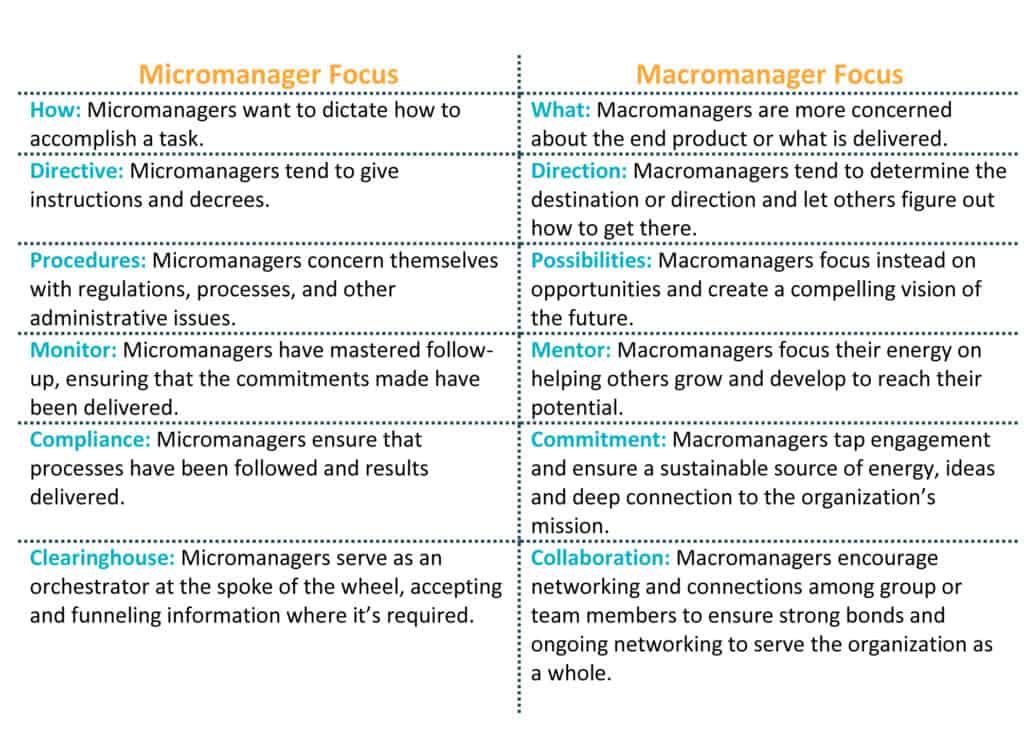Micromanager. It’s one of the least flattering labels one can be tagged with in business today. It connotes an unproductive level of involvement in the work and work products, excessive need for control, nit-pickiness, attention to unnecessary details and a generally unpleasant overall workplace experience. Nobody wants to be a called a micromanager.
 Question: But, what’s the alternative?
Question: But, what’s the alternative?
Answer: Become a macromanager!
Macromanagement is an alternative way of dealing with employees and others that honors who they are and what they know, while at the same time driving engagement and sustainable results.
This table provides a high-level overview of how macromanagement differs from the kind of micromanagement that most of us are all too familiar with.
So, how do you jump from column A to column B and bridge the gap between micro- and macromanagement. Try the following four strategies.
Internalize the big picture. Micromanagement is frequently the result of focusing on the weeds because we don’t know or aren’t familiar enough with the 30,000-foot view. Under such circumstances, it’s understandable that managers might be hyper-attentive to those things over which they have control, demand to be kept “in the loop” on routine matters, and obsess on insignificant details.
The antidote is to helicopter up and explore and internalize the big picture. This involves becoming conversant in the organization’s strategies, threats, challenges and tactics. Understanding where the business is headed creates the guardrails for success. And, it allows for more flexibility and creativity in terms of getting there.
Know your audience. It could easily be argued “micromanagement” is in the eye of the beholder—or the person being managed. If I were performing a detailed, technical, and high-stakes task for the first time (like a medical procedure), I might welcome an expert looking over my shoulder, directing my every move. Managers at all levels of the organization must learn to flex their style and responses to the needs of those who report to them. An assessment of competence drives how much or how little direct instruction, guidance, support or latitude is required for an individual to deliver the required results.
Develop your powers of observation. The objective data you gather will help to inform your choice of the most appropriate and effective ways to interact with employees. So monitor what matters. Watch the metrics and indicators that most closely align with success. Watch and listen to the cues available to you. They will provide the “macro” data you need and guide you toward the most productive response.
Ask for feedback. While observation is a powerful tool for managers and leaders, so is conversation. Too frequently we try to divine what others might be thinking or feeling, when the answer is just a question away. Want to know where you are on the micro/macromanagement continuum (and where you should be)? Simply adopt a spirit of curiosity and invite your employees’ feedback. Get started with questions like:
- How am I helping or hindering your progress?
- What could I do more/less of to support you better?
- What do you need to continue to grow in your job?
Given the complexity of today’s workplace, the expectations of workers, and the fundamental need to help businesses thrive, it’s essential for managers to shift their focus away from the weeds and provide just the structure and support necessary to help employees succeed — and nothing more.


